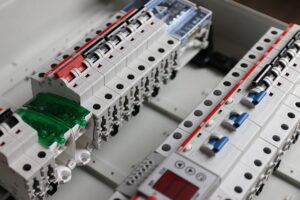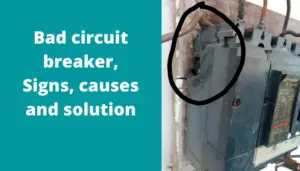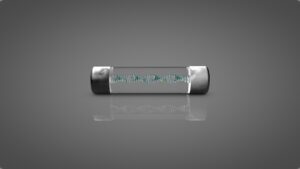Electricity is a fundamental part of our lives, and it powers everything from our homes to our mobile devices. However, if a circuit or device draws too much current, it can cause a range of issues, from minor inconvenience to severe damage.
In this article, we will discuss the consequences of overcurrent situations and how to prevent them.
Table of Contents
What is Overcurrent?
Overcurrent occurs when the current in a circuit exceeds its rated capacity. This can happen for a variety of reasons, including a faulty circuit, a short circuit, or a device that draws too much power.
Overcurrent can cause damage to the circuit, devices, and even start fires. Therefore, it’s essential to prevent overcurrent situations.
overcurrent signs
There are several signs that can indicate an overcurrent situation at home. Here are some common signs of overcurrent to look out for:
- Circuit Breaker Tripping: If a circuit breaker keeps tripping, it could be a sign of overcurrent. Circuit breakers are designed to shut off power when the current exceeds its rated capacity, preventing damage to the circuit and devices. If a breaker trips frequently, it may indicate that the circuit is overloaded or has a fault.
- Flickering Lights: If the lights in your home flicker or dim, it may indicate an overcurrent situation. When a device or appliance draws too much current, it can cause voltage drops, leading to flickering lights.
- Burning Smell: A burning smell can indicate that a circuit or device is overheating due to overcurrent. If you notice a burning smell, turn off the power and investigate the source immediately.
- Warm Electrical Outlets: If your electrical outlets feel warm to the touch, it may be a sign of an overcurrent situation. When too much current flows through the wiring, it can cause the outlet to overheat and feel warm.
- Damaged or Burned Outlets: Overcurrent can cause outlets to become damaged or burned. If you notice any discoloration or scorch marks around your outlets, it could be a sign of an overcurrent situation.
It’s essential to take overcurrent situations seriously and investigate any signs that you notice. Overcurrent can cause significant damage to your home, devices, and even create safety hazards.
If you suspect an overcurrent situation, it’s best to contact a qualified electrician to assess and fix the problem.
Consequences of Overcurrent
Overcurrent can cause various consequences that can affect both the circuit and the devices connected to it. Some of these consequences include:
- Circuit damage: When the current in a circuit exceeds its rated capacity, it can cause the circuit to heat up and melt. This can lead to circuit damage and, in some cases, even fire.
- Device damage: Overcurrent can also damage the devices connected to the circuit. For example, if you plug too many devices into a power strip, it can cause the strip to overheat and damage the devices connected to it.
- Safety hazards: Overcurrent can also create safety hazards, such as electrical shocks or fires, which can be dangerous or even deadly.
- Increased electricity bills: Overcurrent can also lead to increased electricity bills, as it wastes energy and can cause damage to appliances and devices.
Preventing Overcurrent Situations
Preventing overcurrent situations is crucial to avoid damage to the circuit, devices, and even safety hazards. Here are some ways to prevent overcurrent:
- Use circuit breakers: Circuit breakers are devices that automatically shut off the circuit if the current exceeds its rated capacity, preventing damage to the circuit and devices.
- Use fuses: Fuses are similar to circuit breakers and are designed to protect circuits and devices from overcurrent. However, unlike circuit breakers, fuses need to be replaced once they blow.
- Limit the number of devices connected to a circuit: Avoid overloading circuits by limiting the number of devices connected to them.
- Check the rating of devices: Before plugging in a device, check its power rating to ensure that it does not exceed the capacity of the circuit.
- Use surge protectors: Surge protectors are devices that protect electronics from power surges caused by lightning or other electrical issues, preventing overcurrent situations.
home appliances That draw much current
Several home appliances can draw much current and cause an overload on the circuit. Here are some of the most common high-power appliances that can cause an overcurrent situation:
- Air Conditioners: Air conditioners draw a significant amount of power and can overload a circuit if not connected to a dedicated circuit. If you notice that your circuit breaker trips when you turn on your air conditioner, it may be a sign of overcurrent.
- Electric Heaters: Electric heaters are another high-power appliance that can cause an overcurrent situation. They draw a lot of current to generate heat, and if the circuit is not designed to handle the load, it can overload and cause damage.
- Electric Ovens and Stoves: Electric ovens and stoves can draw a significant amount of power, especially when used at high temperatures. If multiple heating elements are used at once, it can cause an overload on the circuit.
- Washing Machines and Dryers: Washing machines and dryers also draw a lot of power and can cause an overcurrent situation if multiple appliances are running on the same circuit. It’s best to connect these appliances to dedicated circuits to avoid overloading the circuit.
- Hair Dryers and Curling Irons: Hair dryers and curling irons can draw a significant amount of power, especially if used at high settings. If used for an extended period, they can cause an overload on the circuit.
It’s essential to be mindful of the power consumption of your appliances and ensure that they are connected to the appropriate circuits.
If you notice any signs of an overcurrent situation, such as a tripping circuit breaker or flickering lights, it’s best to unplug the devices and contact a qualified electrician to assess the problem.
How to use high-power appliances without causing an overcurrent
Here are some tips to safely use high-power appliances at home without causing an overcurrent:
- Use Dedicated Circuits: High-power appliances such as air conditioners, electric heaters, and electric ovens should be connected to dedicated circuits. A dedicated circuit is a circuit that is solely dedicated to powering one appliance. This ensures that the circuit is not overloaded by other appliances on the same circuit.
- Check Appliance Ratings: Before using any high-power appliance, check the appliance’s voltage and current rating. This information can be found on the manufacturer’s label or in the owner’s manual. Make sure that the appliance is compatible with the circuit’s capacity.
- Limit Appliance Use: Limit the use of high-power appliances, such as hair dryers and curling irons, to shorter periods to avoid overloading the circuit. Turn off appliances when they are not in use.
- Spread Out Appliance Use: Avoid using multiple high-power appliances on the same circuit simultaneously. If you need to use multiple appliances, spread them out over different circuits.
- Upgrade Electrical System: If you find that you are frequently experiencing overcurrent situations or have an older electrical system, it may be time to upgrade your system. A qualified electrician can assess your electrical system and recommend any necessary upgrades.
By following these tips, you can safely use high-power appliances at home without causing an overcurrent.
It’s important to be aware of the power consumption of your appliances and ensure that they are connected to the appropriate circuits.
If you notice any signs of an overcurrent situation, it’s best to unplug the devices and contact a qualified electrician to assess the problem.
Conclusion:
Overcurrent can cause a range of issues, from circuit and device damage to safety hazards.
Preventing overcurrent is essential to avoid these consequences and ensure the safe and efficient use of electricity.
By using circuit breakers, fuses, limiting the number of devices connected to a circuit, checking device ratings, and using surge protectors, you can prevent overcurrent situations and keep your devices and home safe.
Don’t Leave Empty-Handed!
Install my Free Android App on Google Play:
Electrical Cables Most Common Tables “Cables Tables”
And, my Electrical Calculations App “Fast Electrical Calculator”
Discover more great content by subscribing to My channel
Looking to stay ahead of the game in the world of electrical engineering? Subscribe to my YouTube channel and gain access to exclusive content you won’t find anywhere else!
The staff I recommend
(Amazon Affiliate Links to products I believe are high quality):
- Economy 120 Volt/60Hz AC Power Source – Step-Down Voltage & Frequency Converters 1800W
- UNI-T Digital Multimeter Tester UT139C
- 50-Amp Extension Cord for RV “100ft”
- Voltage Stabilizer 110/220v
- Hair Dryer “best selling“
- TOSHIBA EM131A5C-BS Countertop Microwave Ovens
Disclaimer: This contains affiliate links to Amazon products. I may earn a commission for purchases made through these links.



